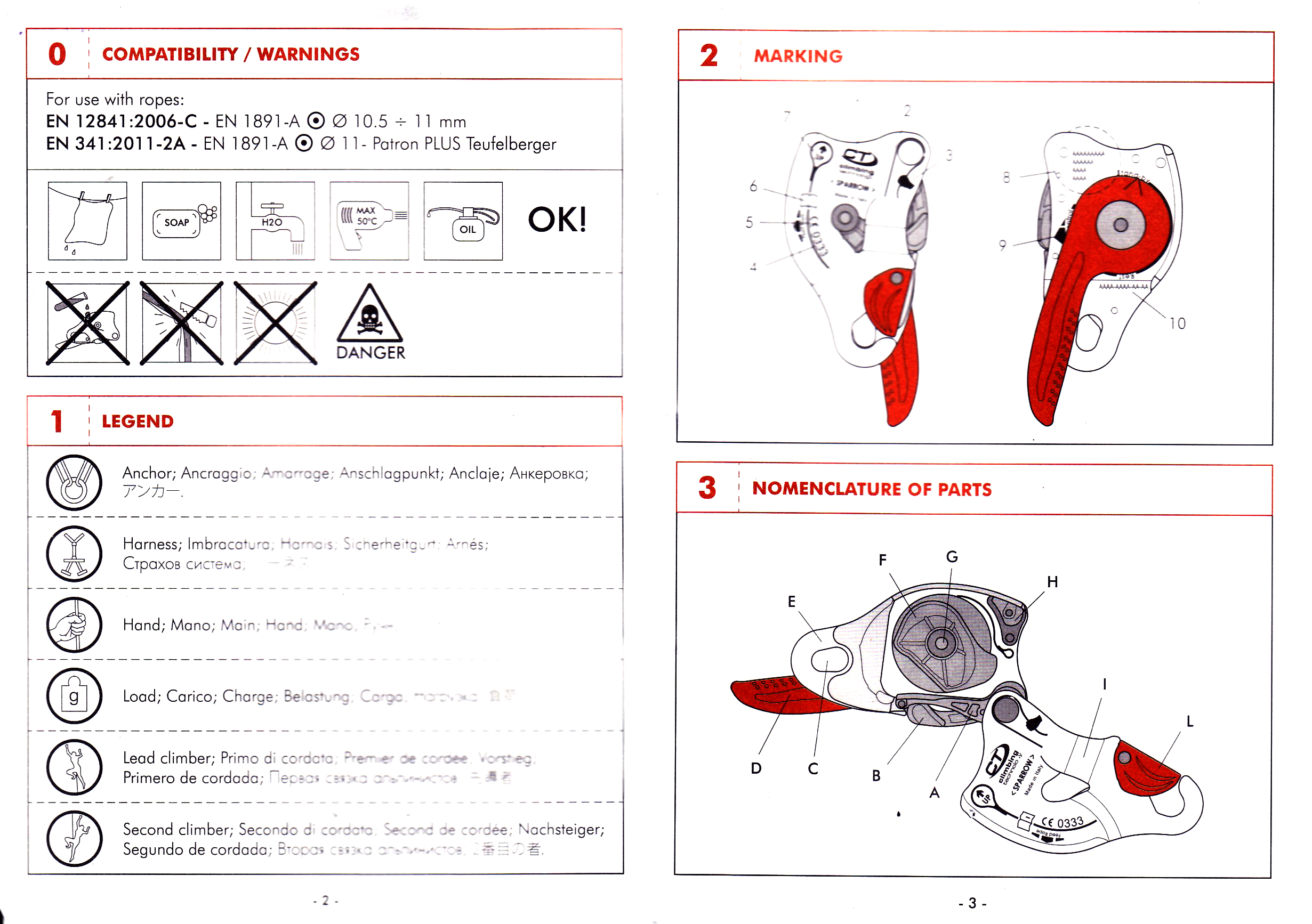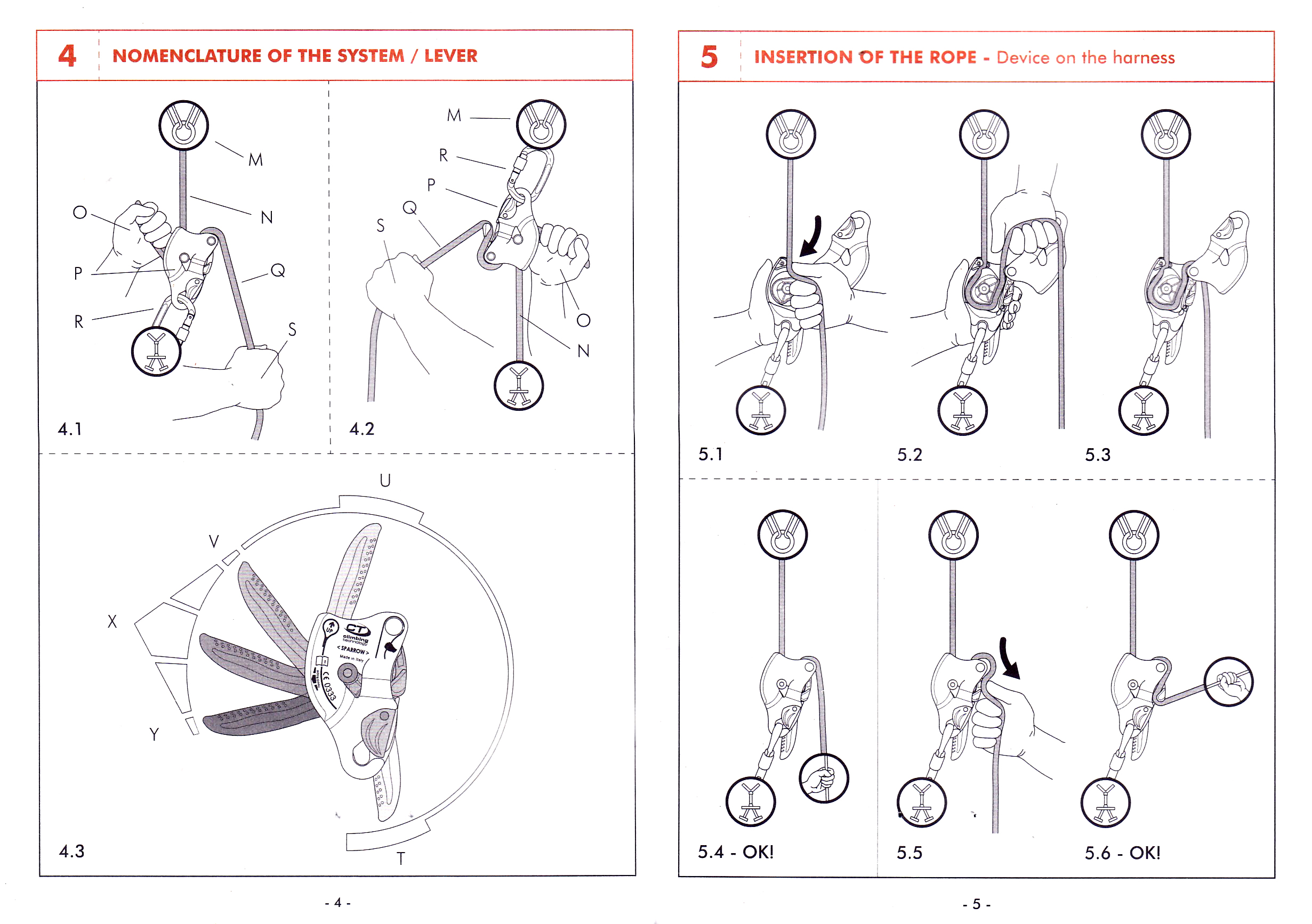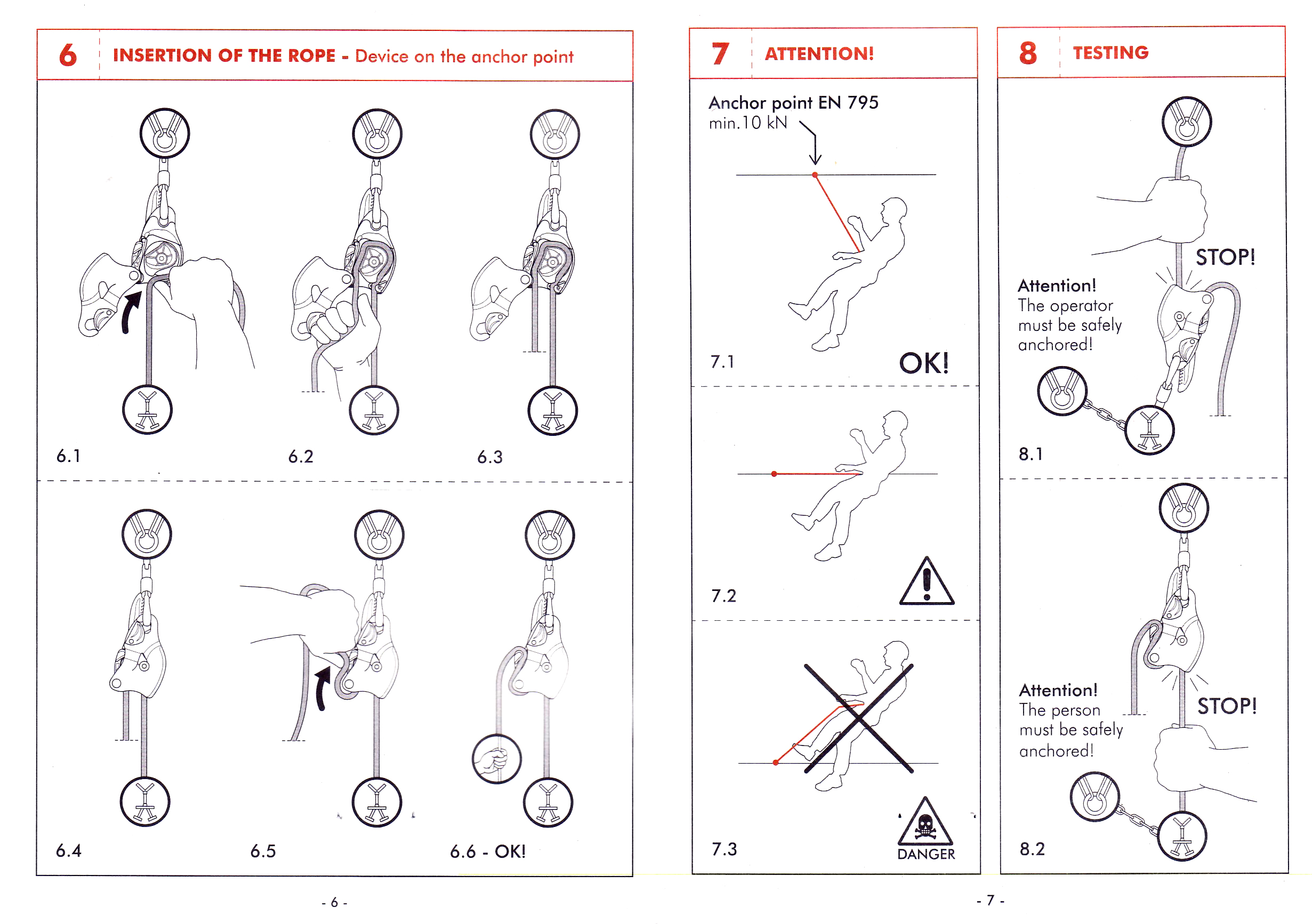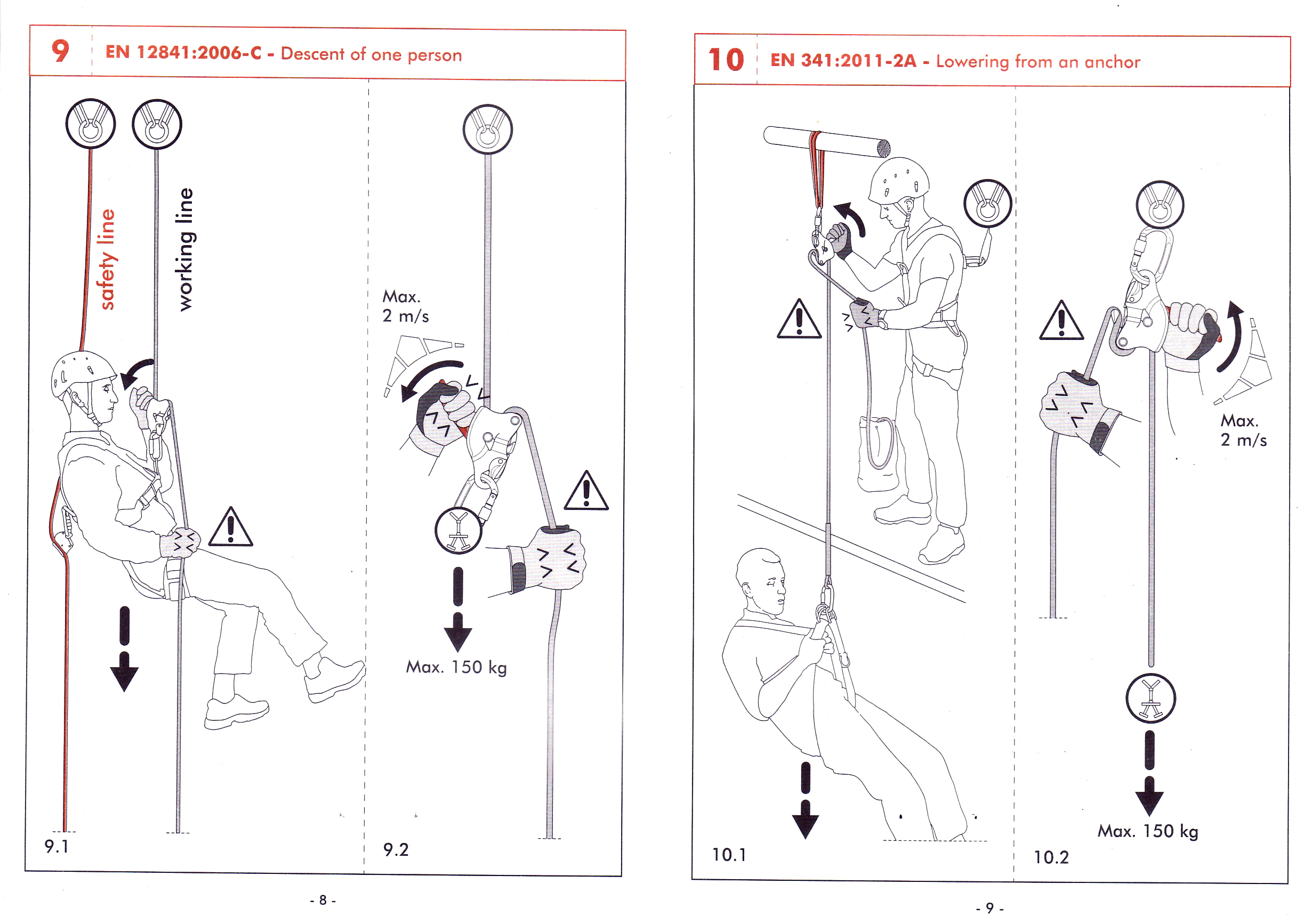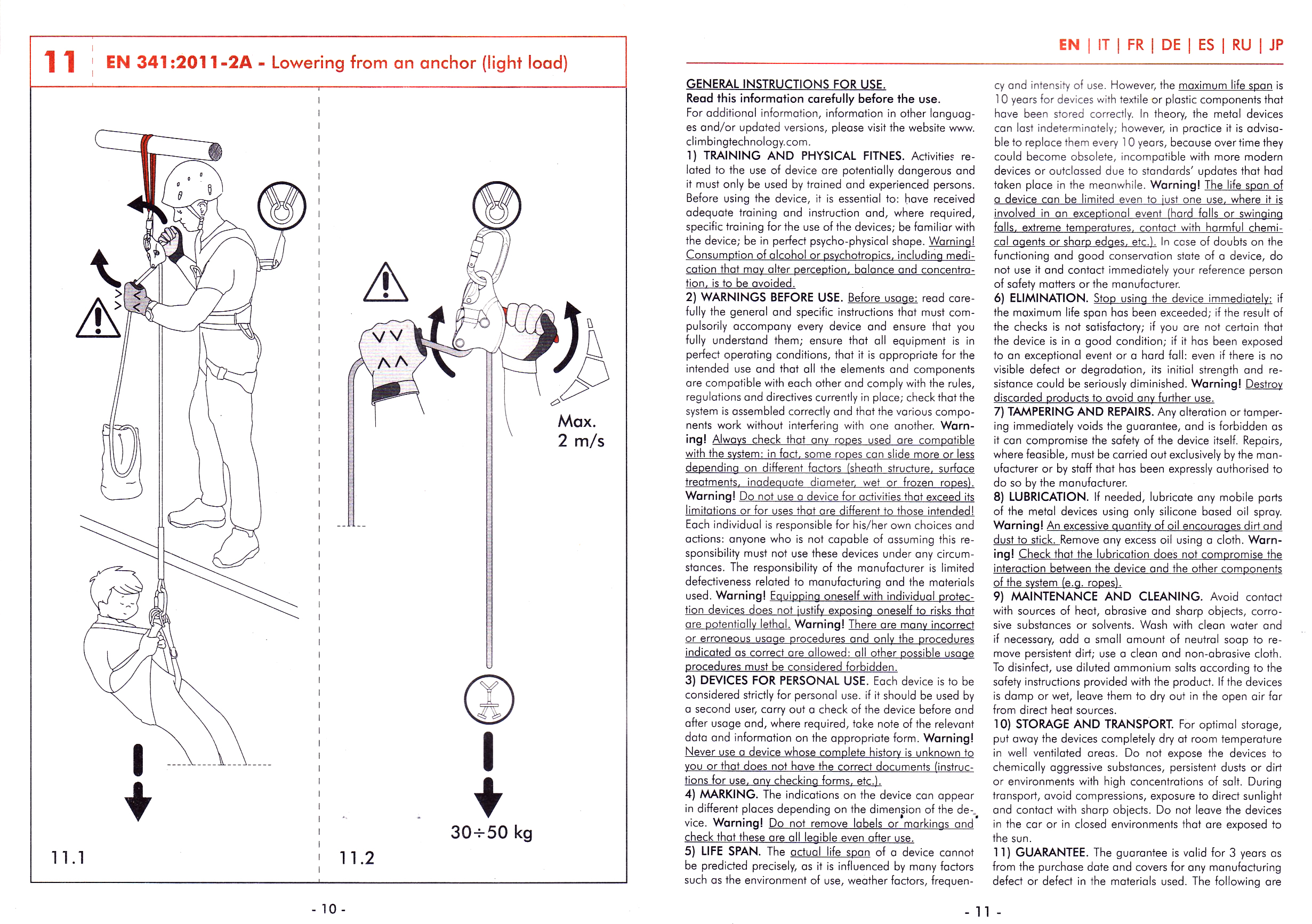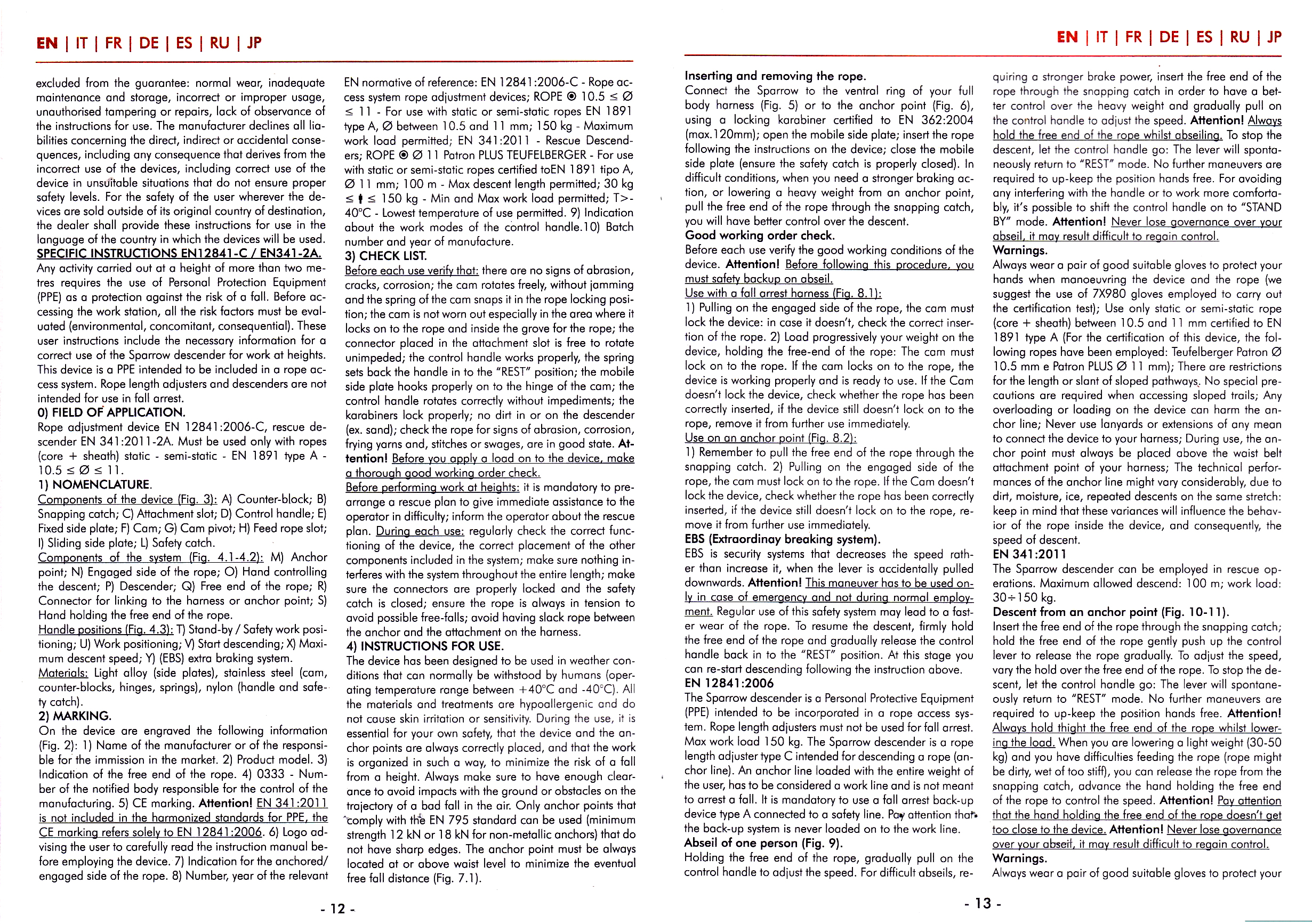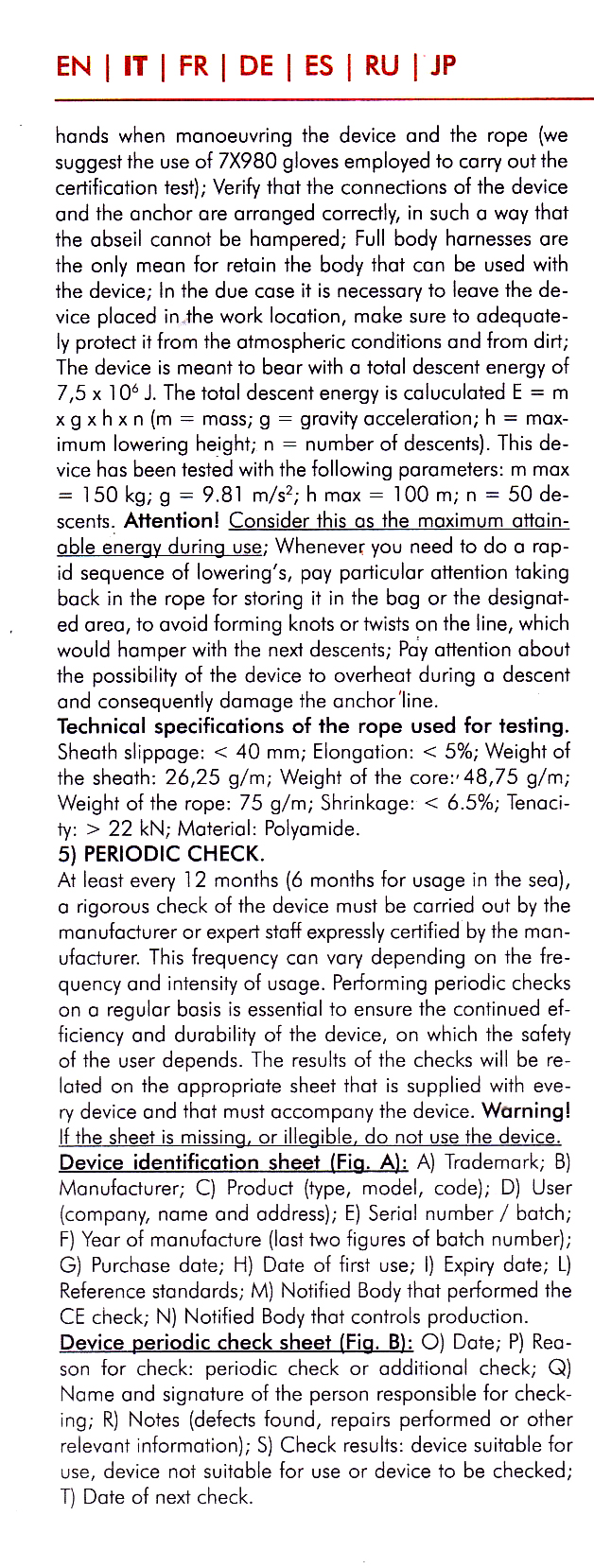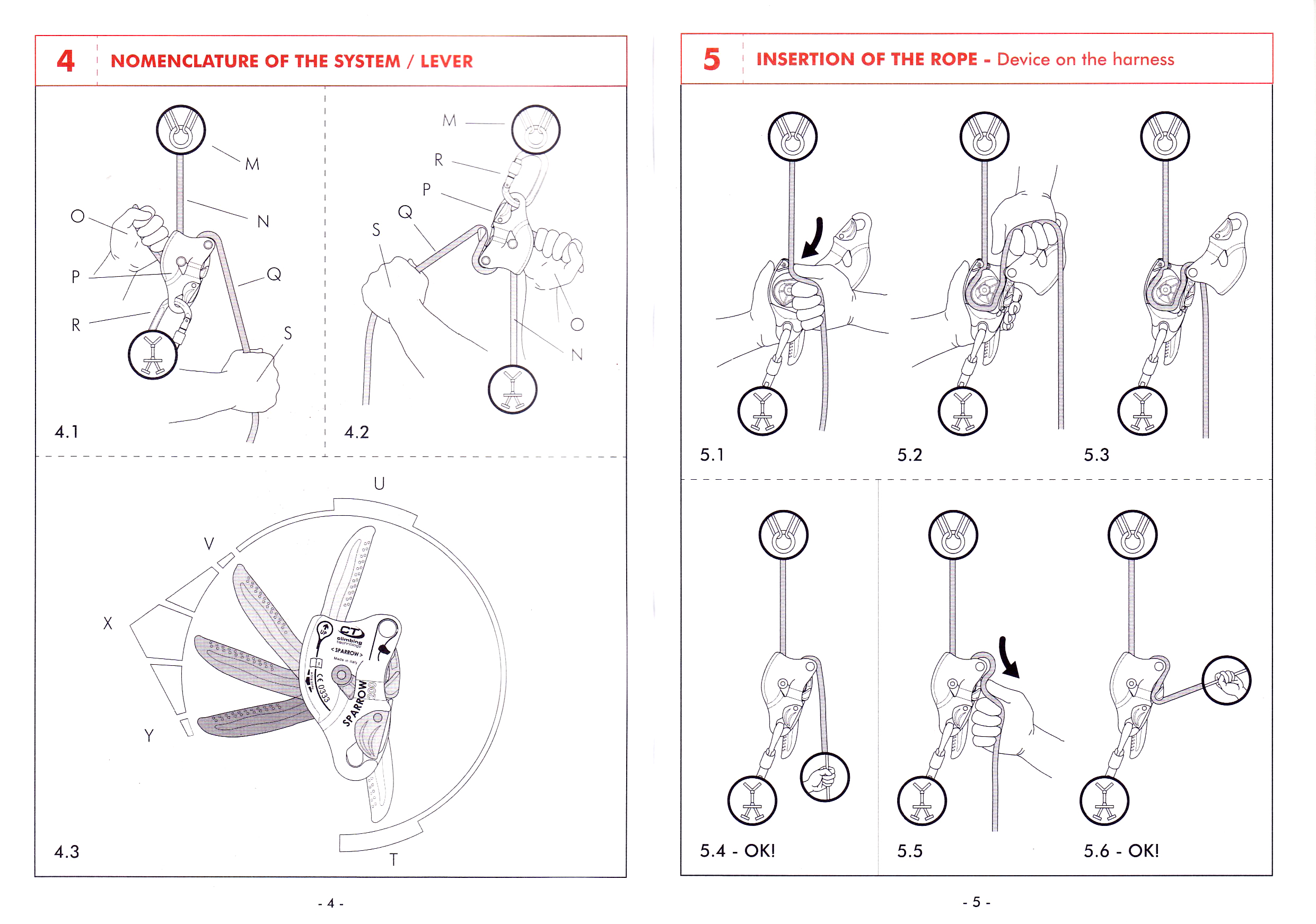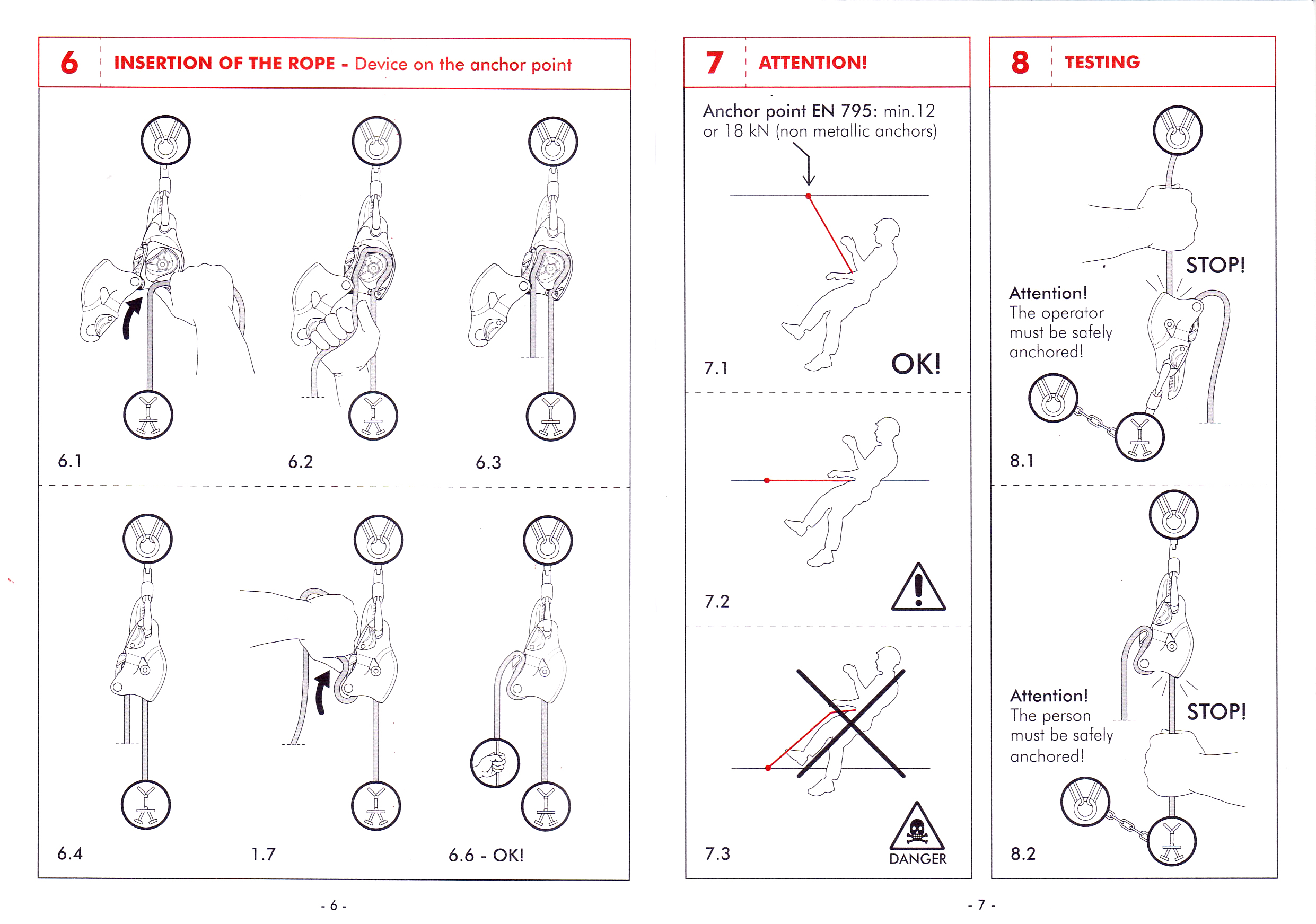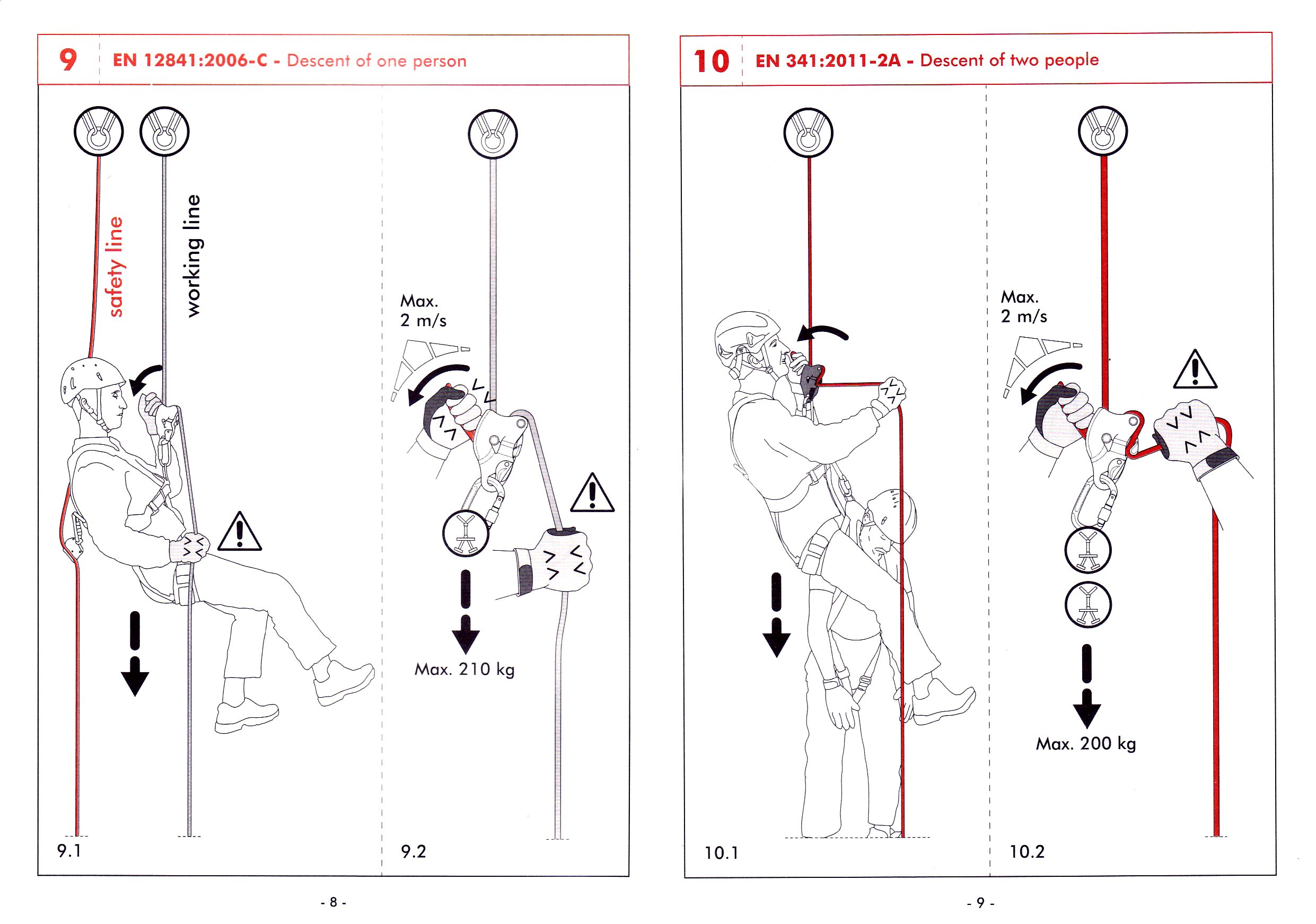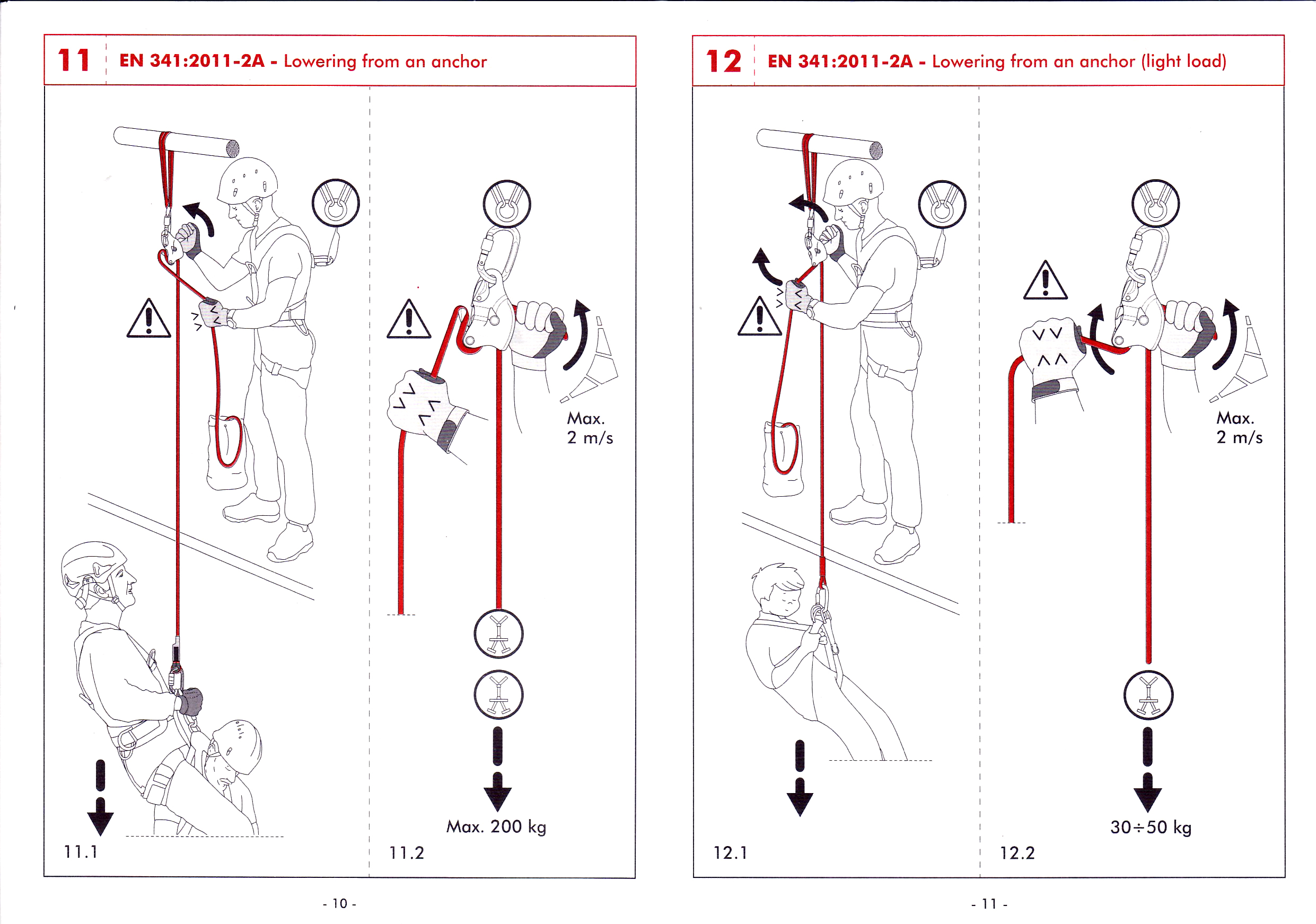Overview
[ Top
| Sparrow 200
| Return to Double-Stop Bobbins
]
Sparrow
(#1432)
Technical Details
I acquired my Climbing Technology Sparrow from Lior Porian in 2015.
My Climbing Technology Sparrow is 181 mm. tall, 86 mm. wide, 53 mm. thick, and weighs 524 g.
The two side plates are made of 3.0 mm. aluminum.
One side plate
pivots to allow threading the rope. The lower ends of the side plates
are bent to converge at the attachment point, which consists of
a 15 mm. wide, 22.7 mm. high hole on the fixed plate and a hook on the other. Neither of
the attachment points are beveled. The upper portion of the hook is covered by a plastic gate. The gate pivots on a steel rivet, and a spring set in a deep slot
closes the gate. With the gate closed, the opening is only 18.8 mm
high, and for a round carabiner, effectively less than that.
The lower bollard is part of an autostop assembly. It is a skeletonized stainless steel casting with internal reinforcing ribs and an integral cam. The portion of this bollard extending from eight o’clock to one o’clock has an 10 mm. wide, 6 mm. deep rope groove. The remaining surface is flat except for a nubbin at six o’clock. An plastic
handle is attached to the bollard on the outside of the fixed side plate. Viewed from the rear, the handle storage position is at six o’clock, but it freely rotates clockwise up to 12 o’clock before engaging the cam, and then can continue rotating to four o’clock. For three quarters of the final rotation, pulling the handle decreases friction, but after that, the nubbin comes into play and acts to compress the rope against the anvil on the right, providing braking.
The upper bollard is a stainless steel casting
with a ribbed groove. There is a pivoting cast stainless steel arm on the right that has a rope guide for the trailing line. Another casting attached to the rear shell at the top left acts as a main rope guide.
The pivoting side plate is stamped with various rigging illustrations, an up-pointing arrow labeled "UP," the Climbing Technology logo, "climbing technology," "<SPARROW>," "Made in Italy," "Feed Rope," and "CE03333." The rear is stamped with an arc around the handle with "Stand-by" at the top, "Rest" at the bottom, and "Speed control" at the left. It is also printed with "EN12841:2006-C," "Rope TypeA•10.5≤Ø≤11-150kg," "EN341:2011-2A," "Rope •11-Patron PLUS TEUFELBERGER-100m," "30kg≤[a human icon]≤150kg," "T>-40°C,’ "0114," and "0066-146-14.
Aside from the excessive boring reading material, this is an interesting descender. I like it more than the Petzl I’D because the operating mechanism appears to be simpler and more sensible. I say "appears" because I would have to destroy one of these to learn otherwise.
The rope guide on the left is nice, and idea that might work with other descenders as well.
I have not tried the Sparrow on Goldline. I wonder if the ribbed upper bollard and laid rope construction would interact and vibrate if I did.
[ Top
| Sparrow 200
| Return to Double-Stop Bobbins
]
Sparrow 200
(#1479)
Technical Details
I acquired my Climbing Technology Sparrow 200 from Inner Mountain Outfitters at the 2016 NSS Convention.
The Climbing Technology Sparrow 200 is 180 mm. tall, 85 mm. wide, 53 mm. thick, and weighs 548 g.
Aside from the color and markings there are minor superficial differences between the Sparrow 200 and the Sparrow. The rivet holding the upper left rope guide in place passes from back to front in the Sparrow 200, and front to back in the Sparrow. There are also minor changes to the anvil as well, but not where the rope contacts it. Finally, the finish on the guides, bollard, anvil, and arm are darker.
The pivoting side plate is stamped with various rigging illustrations, an up-pointing arrow labeled "UP," the Climbing Technology logo, "climbing technology," "<SPARROW>," "Made in Italy," "Feed Rope," and "CE03333." It is also printed with "SPARROW 200." The rear is stamped with an arc around the handle with "Stand-by" at the top, "Rest" at the bottom, and "Speed control" at the left. It is also printed with "EN12841:2006-C," "Rope TypeA• Ø≤11 - 210kg," "EN341:2011-2A," "Rope •11-Bornack TEC-STATIC PRO 11 -180m," "30kg≤[a human icon]≤200kg," "T>-40°C,’ "0115," and "0041-252-15.
It is not obvious why the Sparrow 200 carries a different rating than the Sparrow (210 kg. vs. 150 kg.). Since I cannot see an obvious difference, and since each is rated for use only with a particular rope (neither of which are readily available in the USA), perhaps it is the difference in ropes that accounts for the difference in rating.
The instructions provided with my the Sparrow 200 are different than those provided with my Sparrow, but with one excption, the differences are minor. The exception is that the Sparrow 200 instructions provide information for descending with two people.
[ Top
| Sparrow
| Sparrow 200
]



